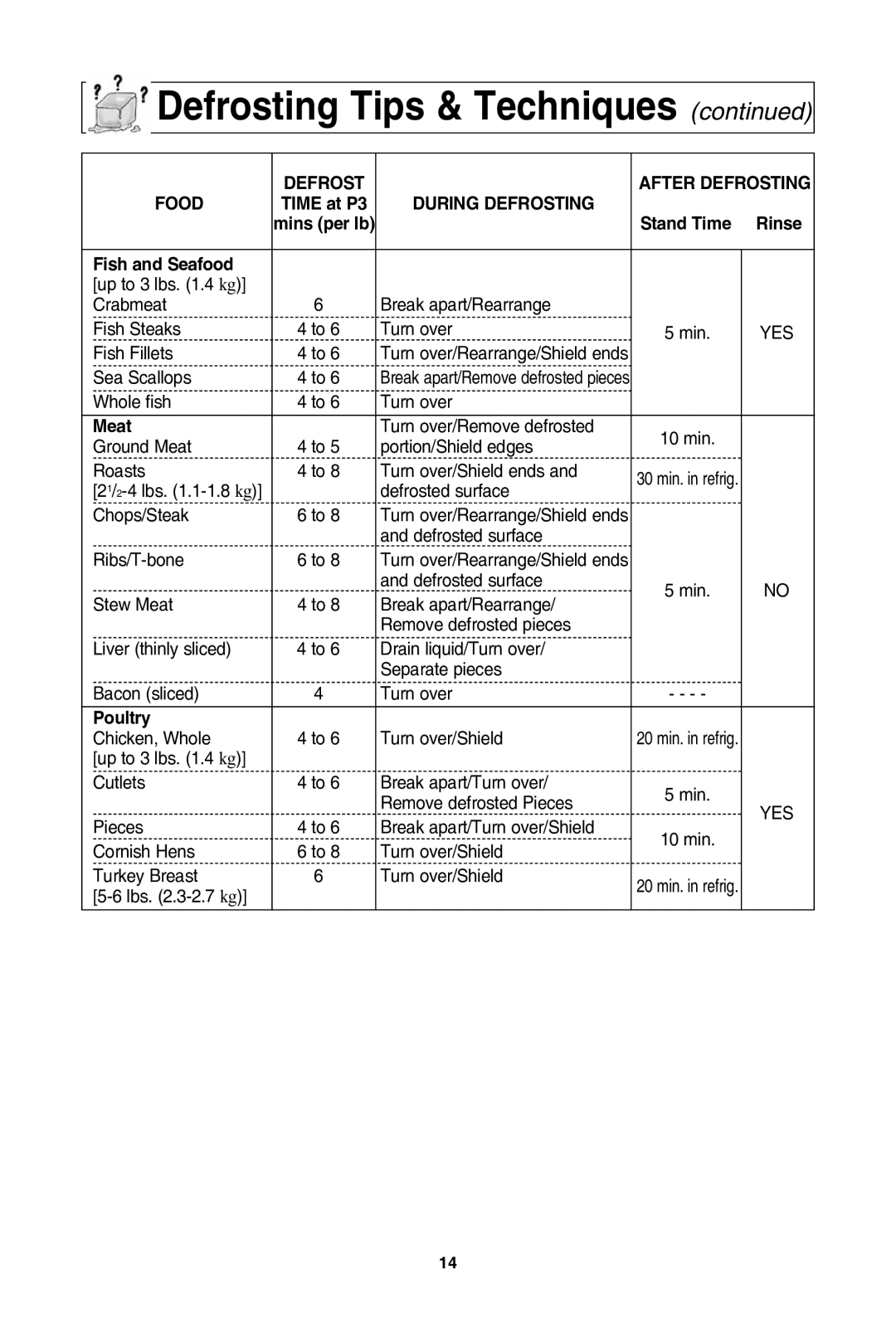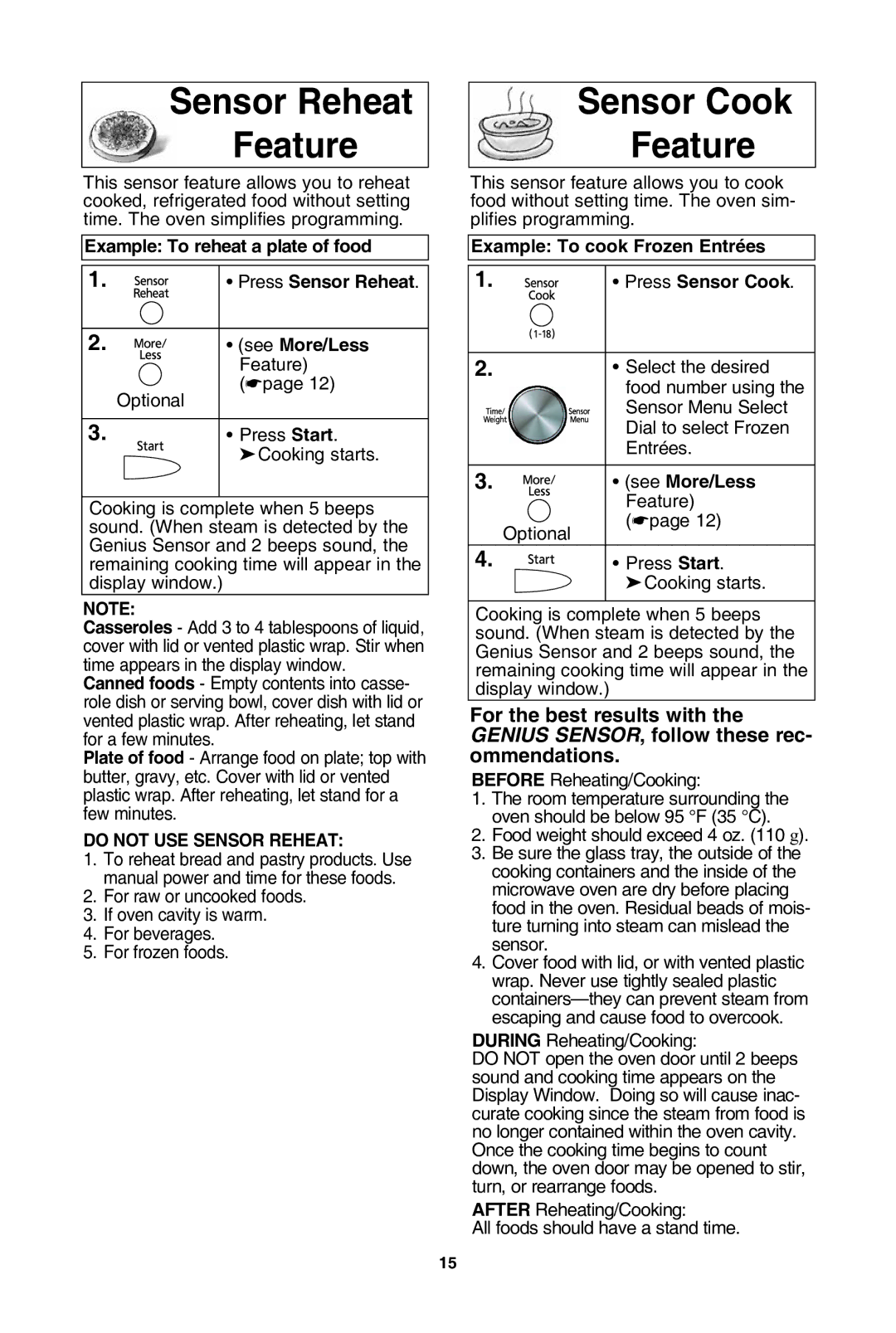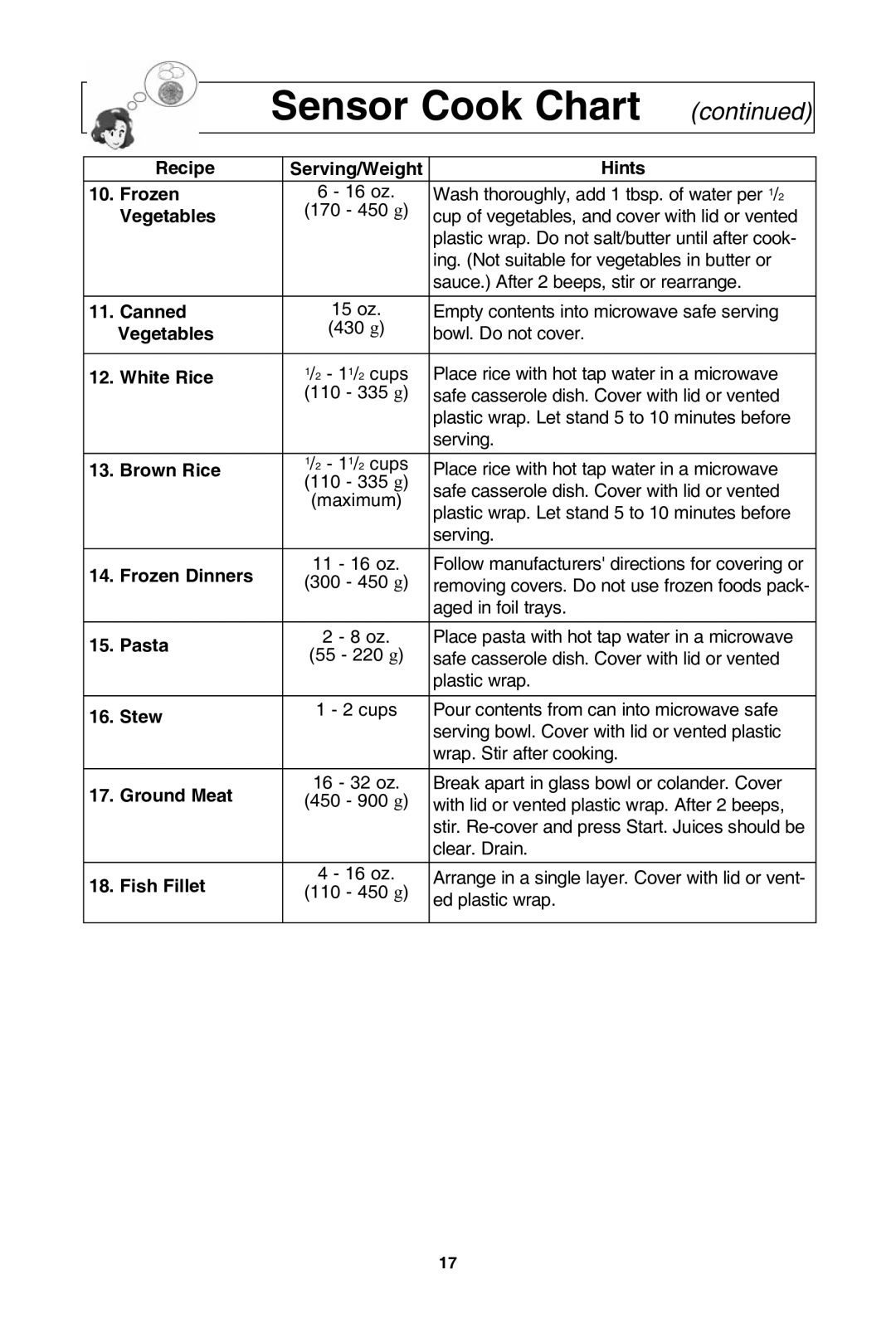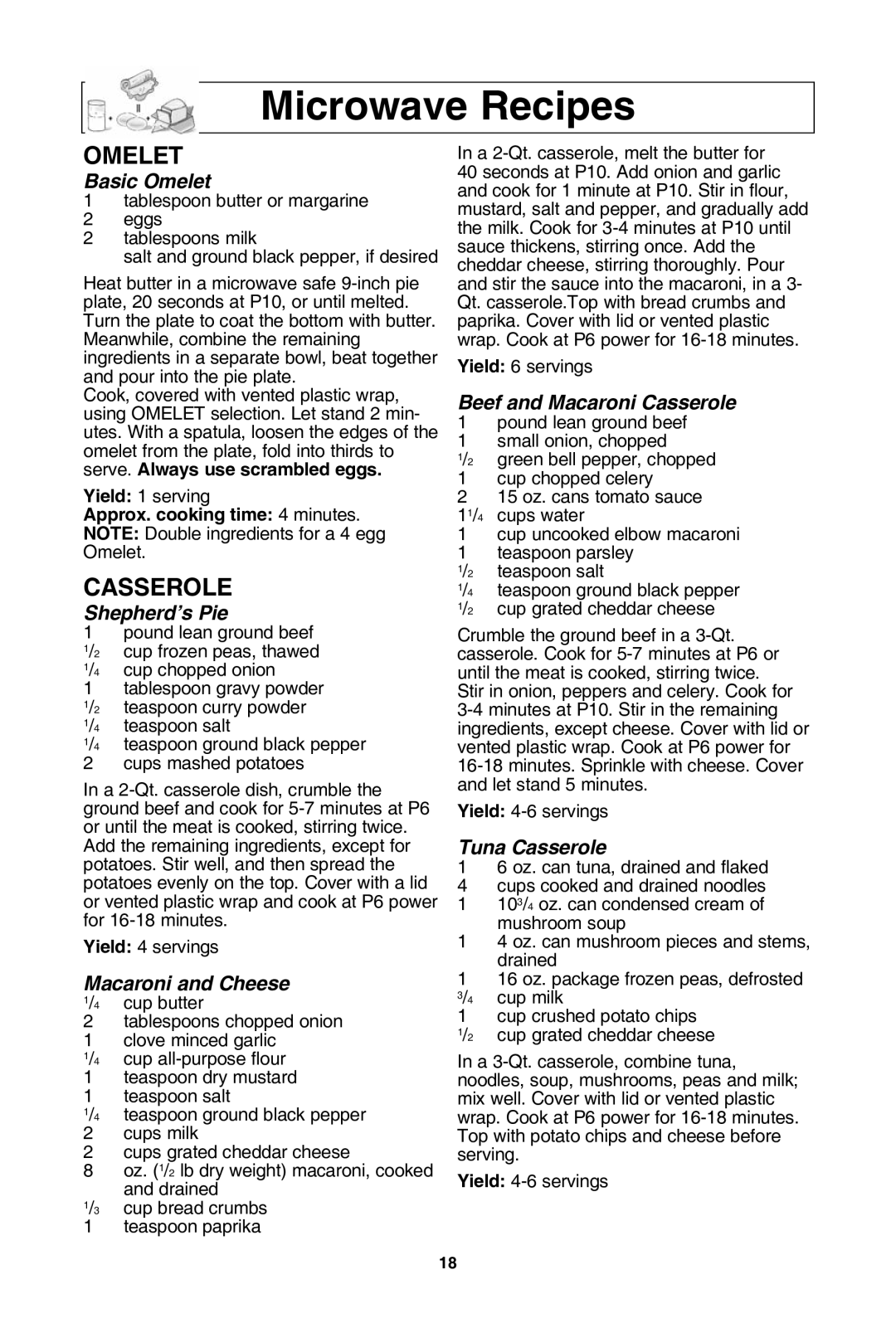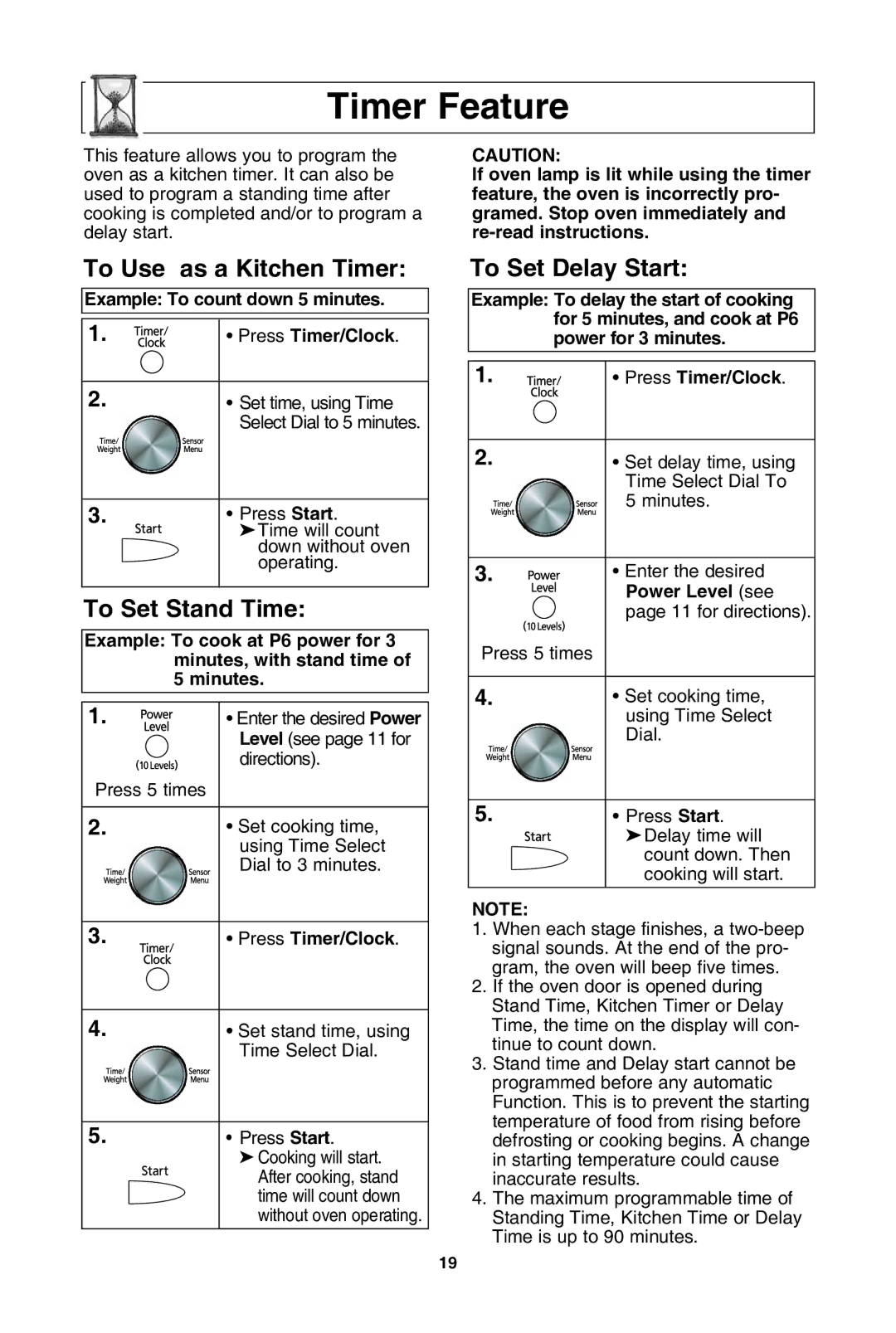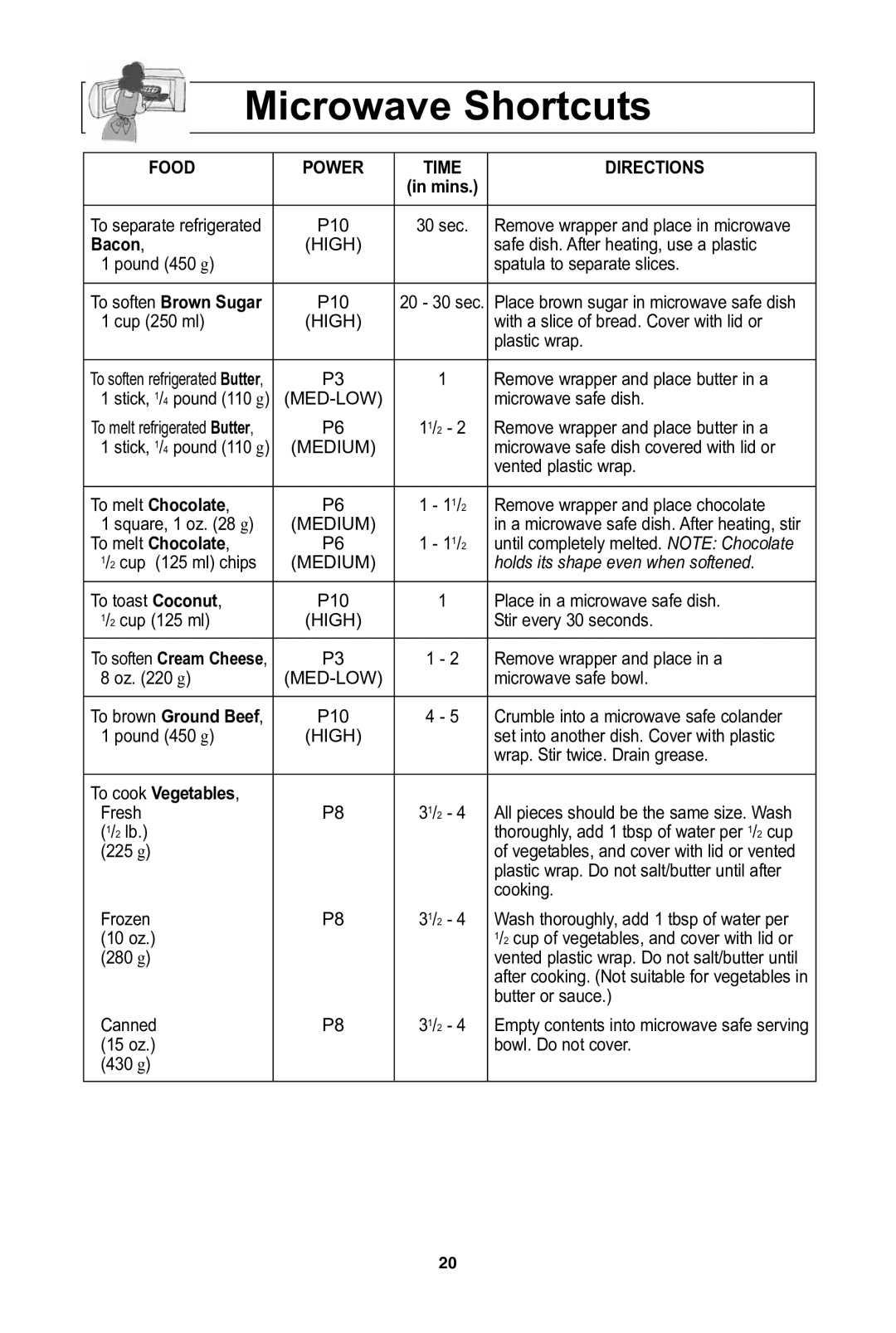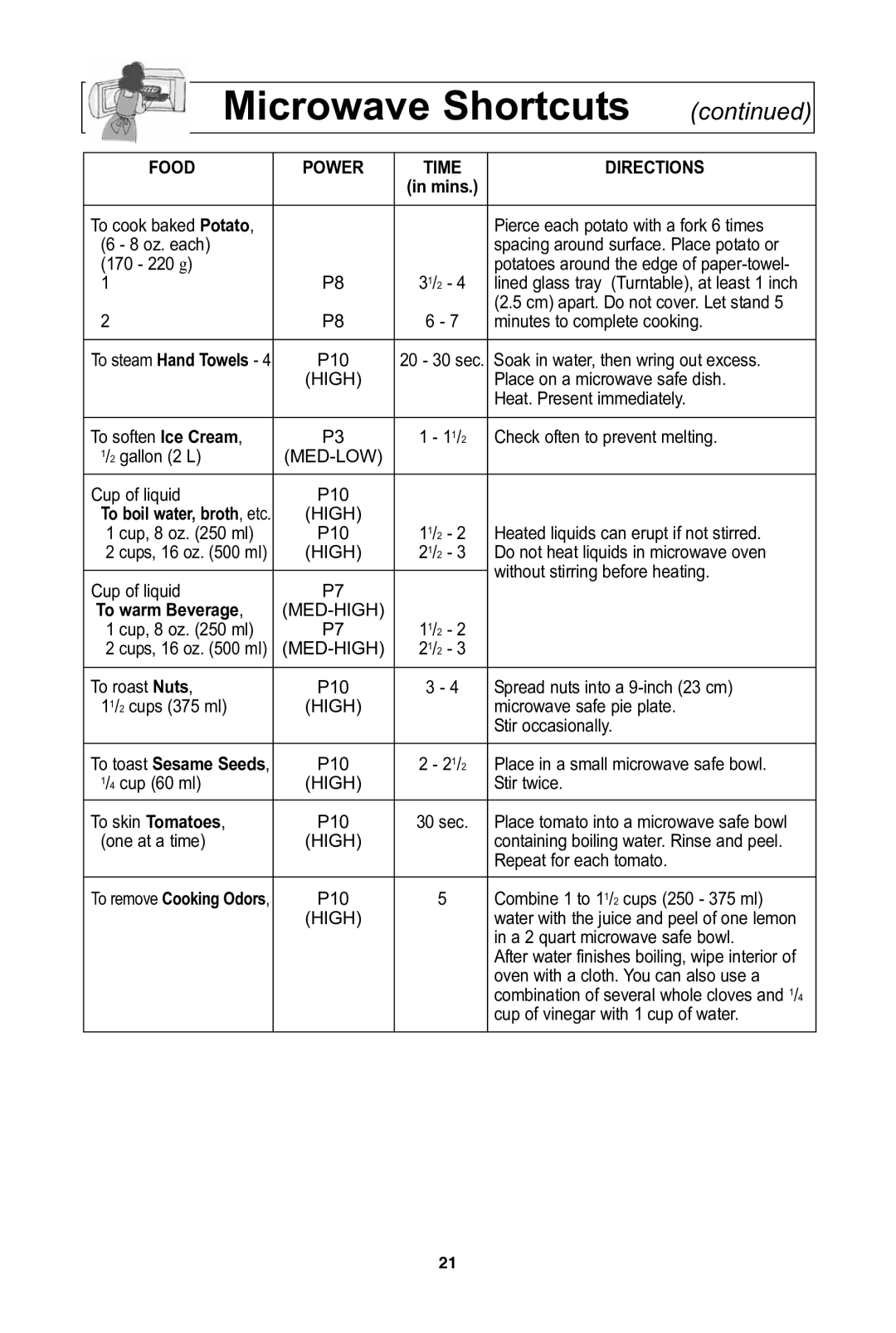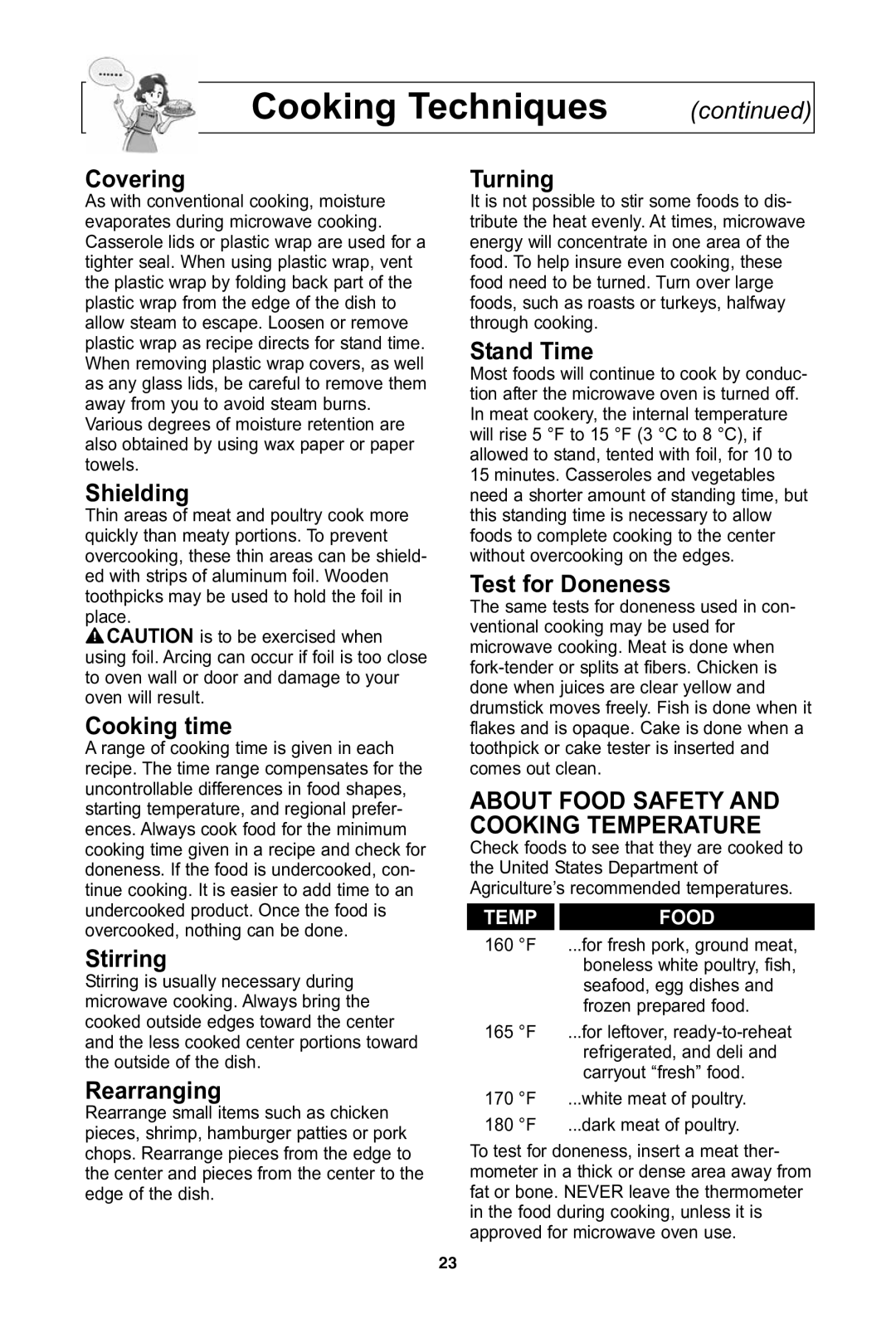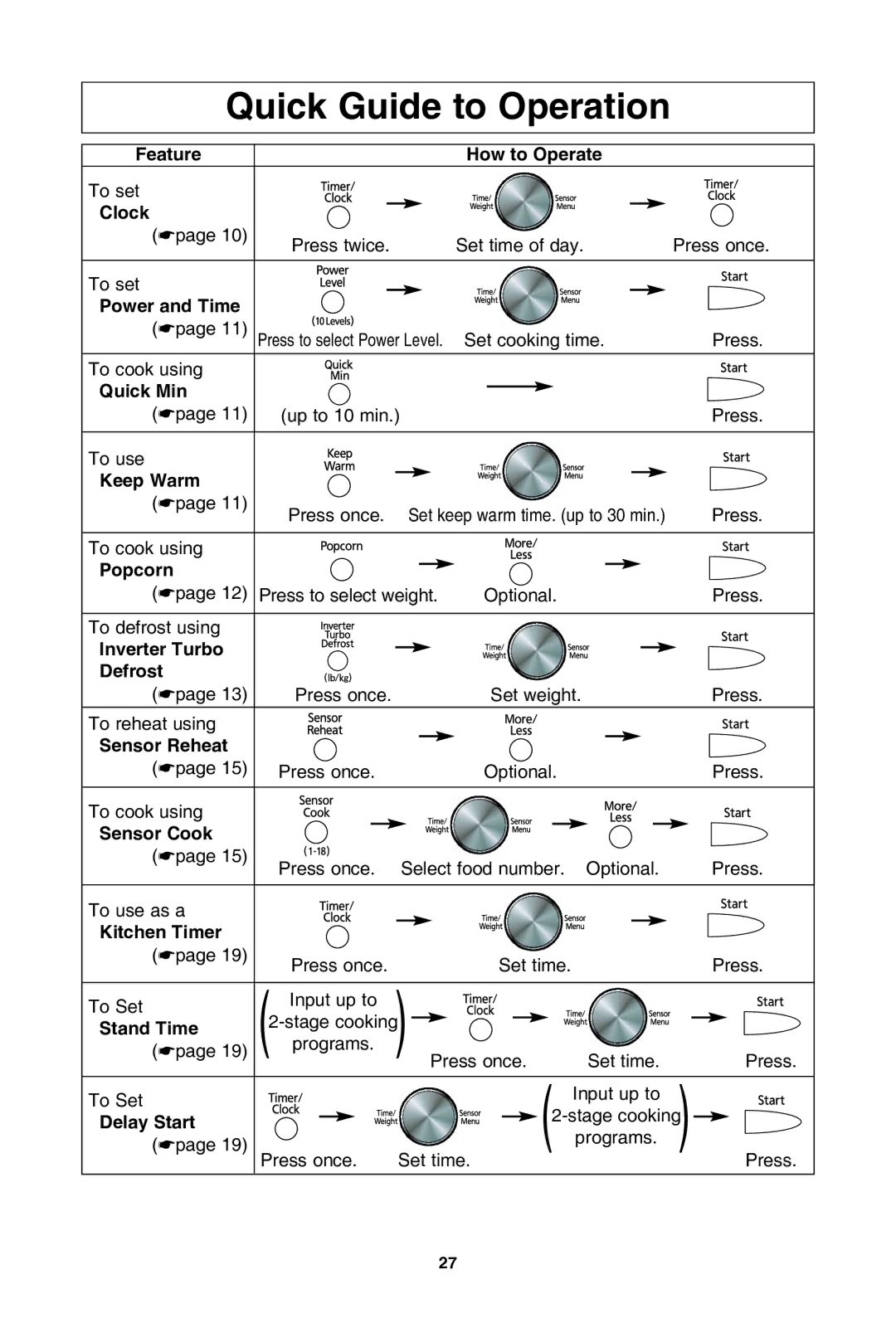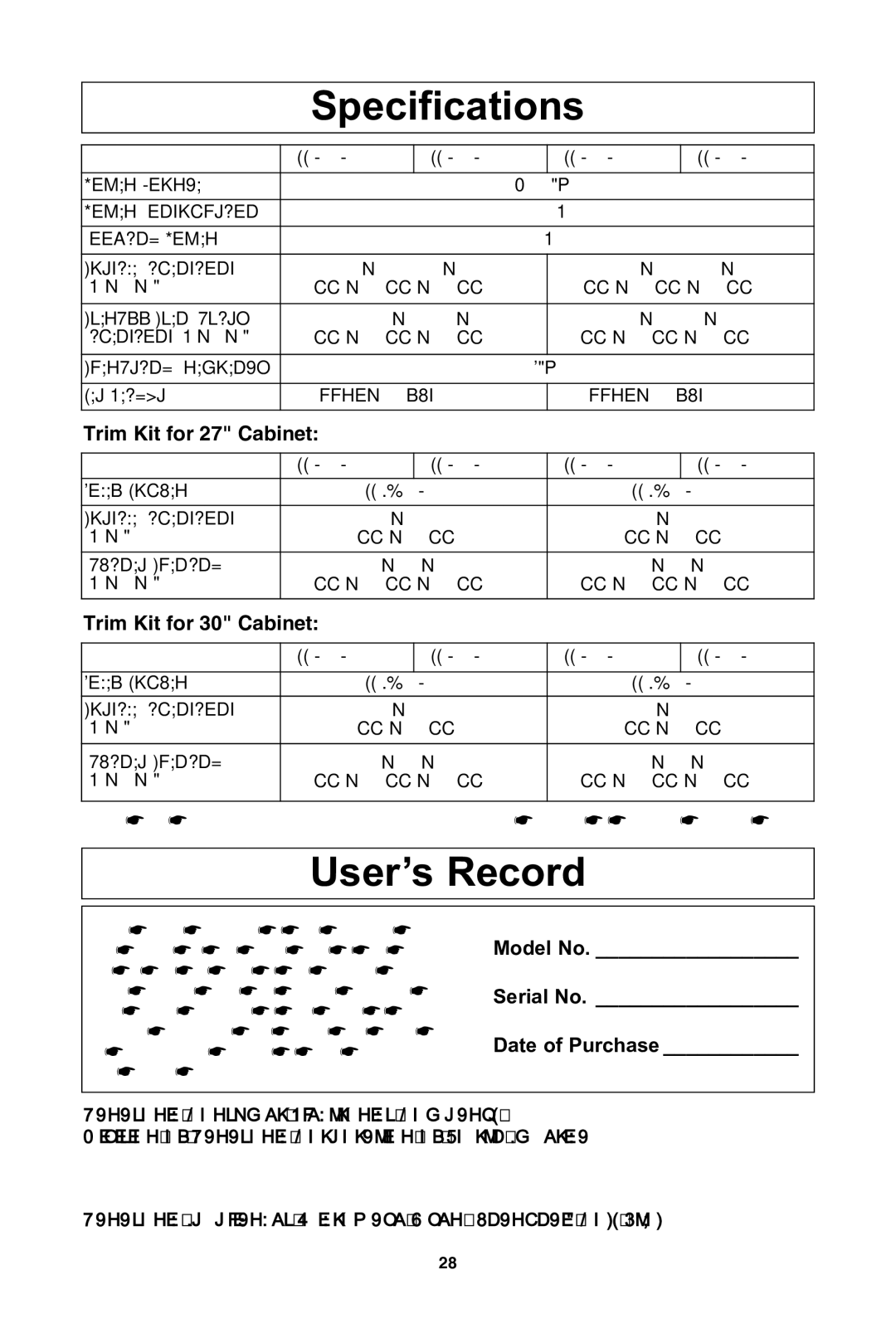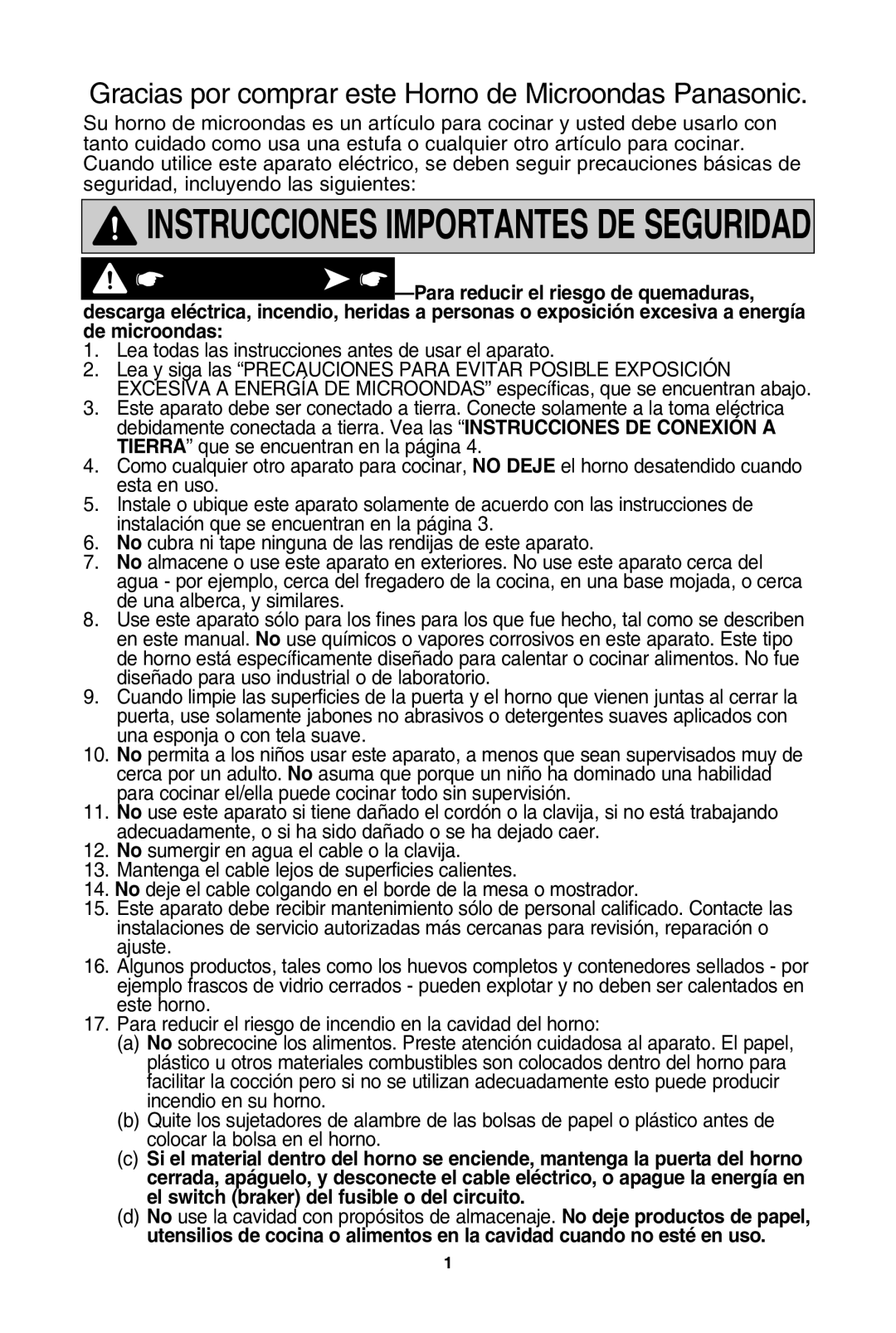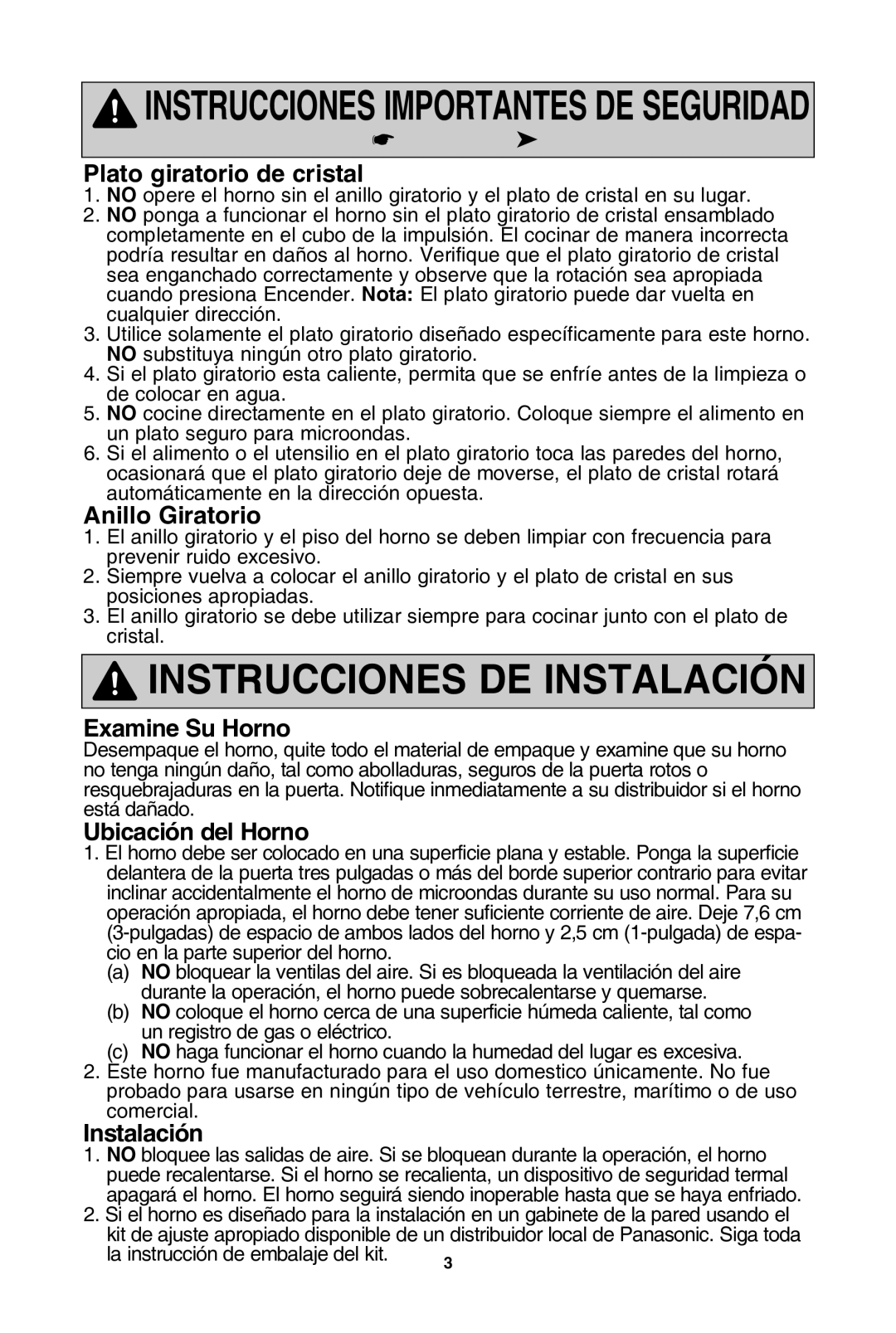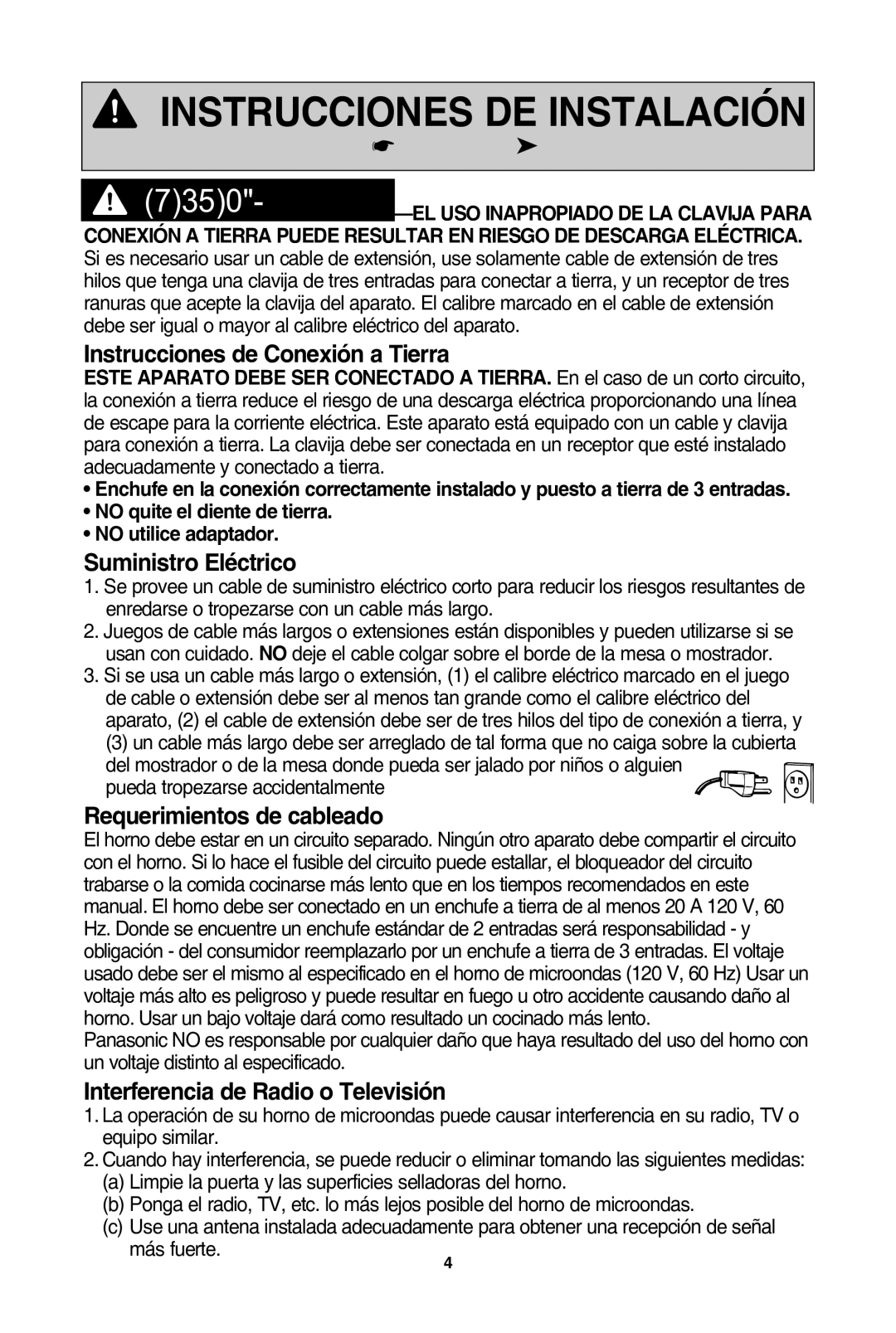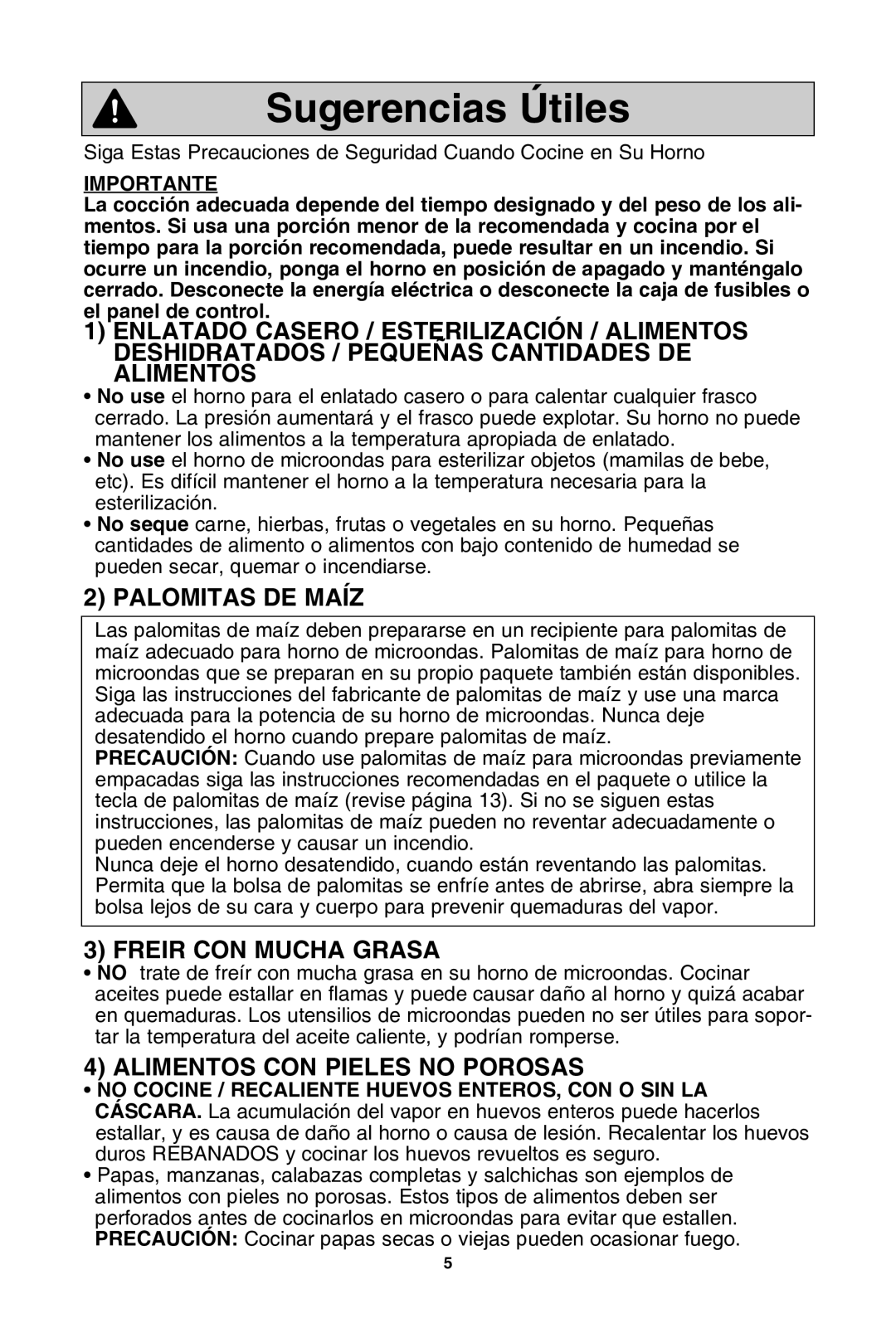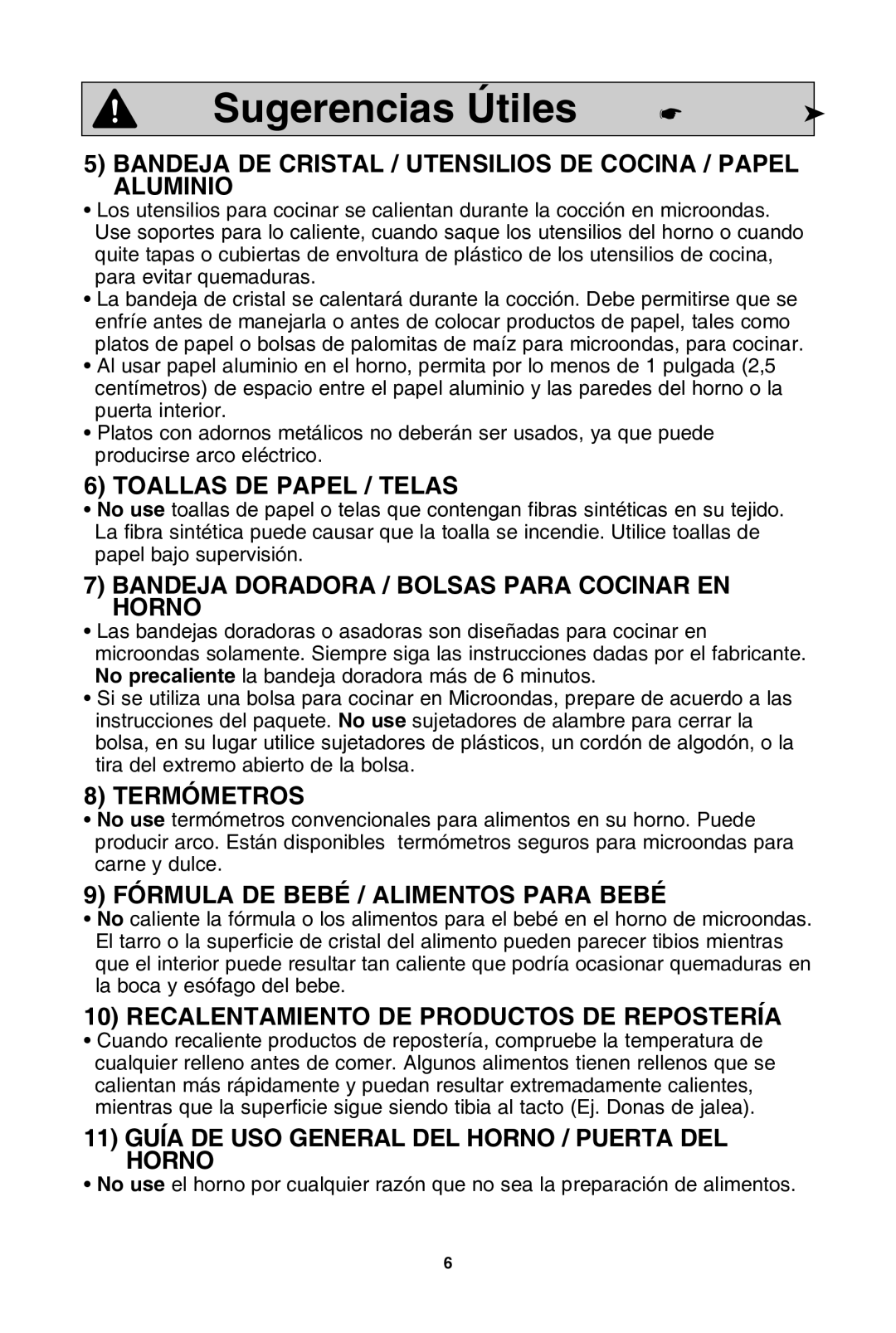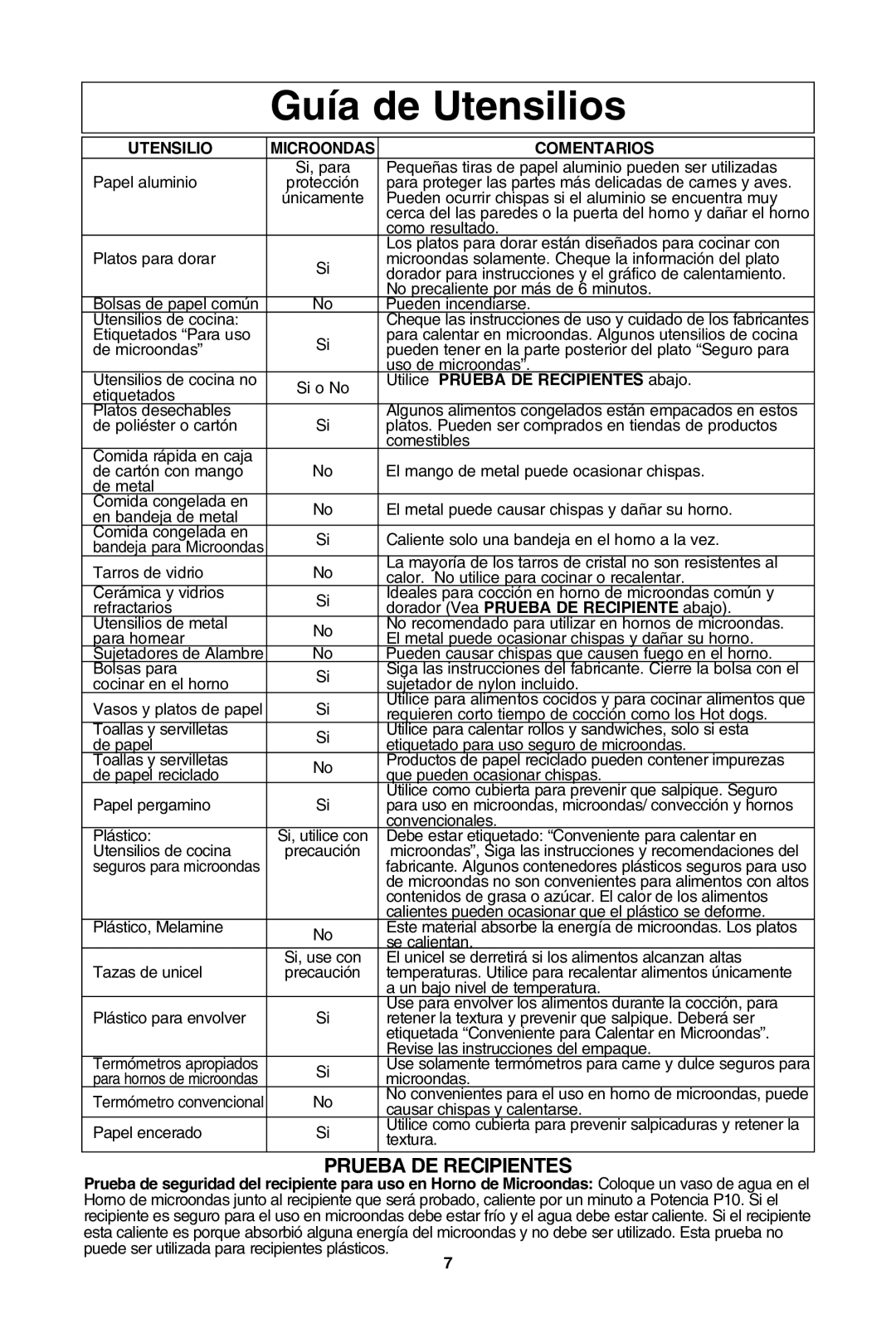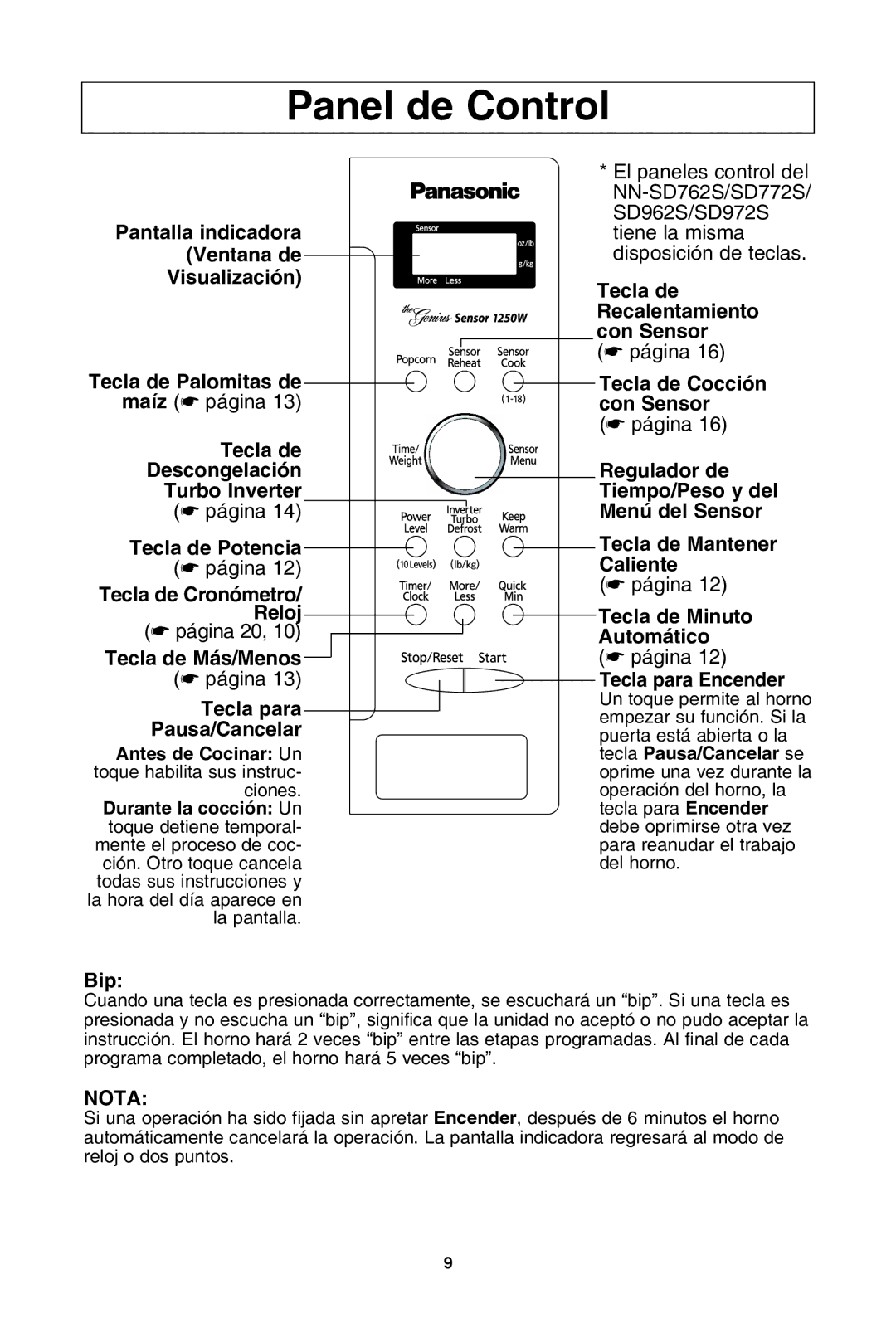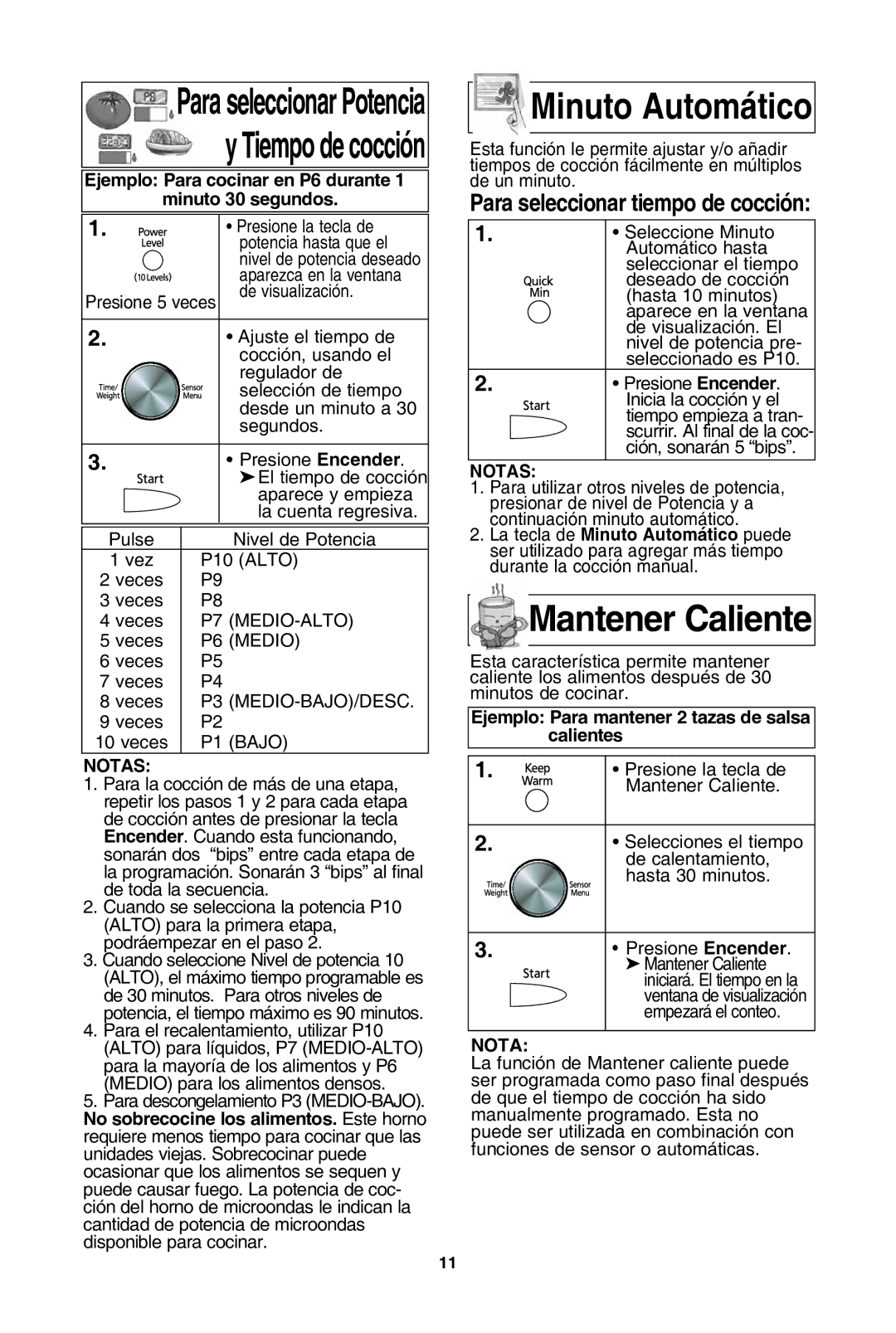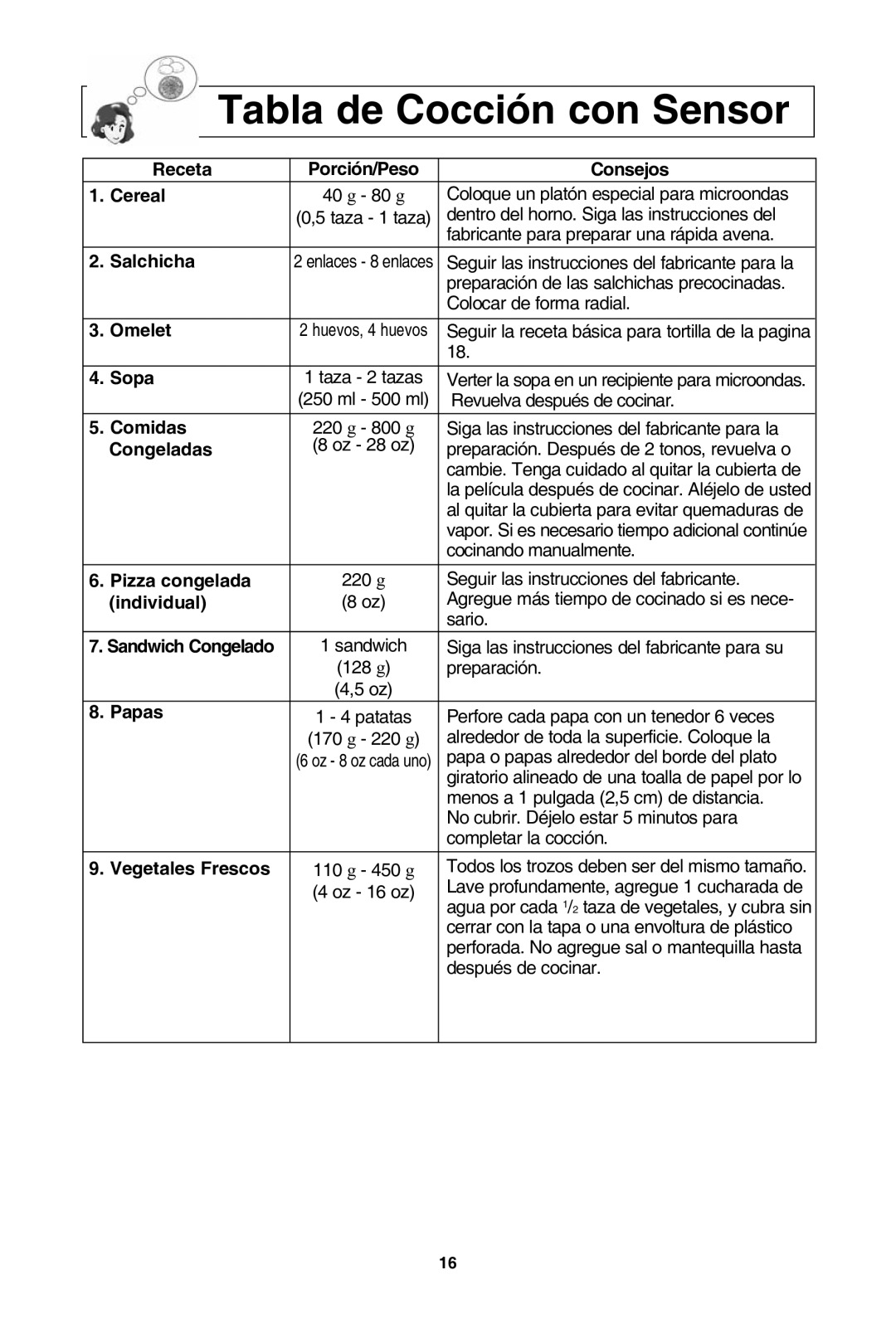NN-SD772S, NN-SD972S, NN-SD762S, NN-SD962S specifications
The Panasonic NN-SD762S, NN-SD972S, NN-SD772S, and NN-SD962S are part of Panasonic's innovative line of countertop microwave ovens designed to enhance your cooking experience through advanced technology and user-friendly features. Each model boasts a sleek, modern design that fits seamlessly into any kitchen decor while providing a range of powerful functions to meet various cooking needs.The NN-SD762S is a compact microwave equipped with inverter technology. This technology ensures a consistent level of power, which means food cooks evenly and prevents hot spots. The built-in smart technology adjusts the power while cooking to maintain the optimal temperature, particularly beneficial for delicate items like fish or sauces. It features a 1200-watt power output and a 1.2 cubic foot capacity, making it ideal for reheating, defrosting, and cooking a variety of meals.
Similarly, the NN-SD972S takes convenience a step further with its generous 2.2 cubic foot capacity, making it suitable for larger dishes or meals for the whole family. This model also utilizes inverter technology, allowing for even cooking results. With its 1250-watt high power, the NN-SD972S includes a user-friendly control panel with one-touch sensor cooking buttons that automatically adjust cooking time and power for various foods, ensuring perfectly cooked meals every time.
The NN-SD772S not only provides great performance but is also designed with user convenience in mind. It features a sleek stainless-steel finish that is easy to clean and resistant to fingerprints. The model also includes a variety of pre-programmed cooking settings, allowing users to quickly reheat or cook without the need for guesswork. Its compact size makes it a flexible addition to smaller kitchens, while still maintaining impressive power levels.
Finally, the NN-SD962S is the flagship model of this series, offering a perfect blend of power and versatility. In addition to its robust 1250-watt output, it incorporates an advanced sensor cooking feature that detects the steam emitted from food and adjusts cooking times accordingly. This technology helps prevent overcooking, making it easier for busy families to enjoy home-cooked meals.
Overall, these Panasonic microwave ovens exemplify advanced cooking technology coupled with user-friendly features, making them perfect for a variety of cooking tasks while catering to users seeking reliability and efficiency in their kitchen appliances.



